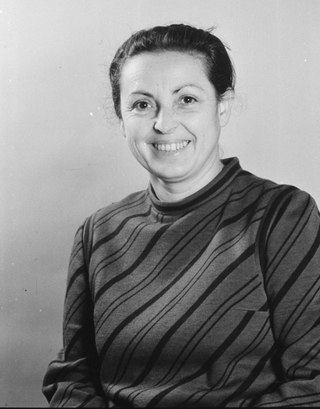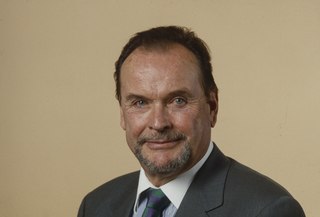
Switzerland is a semi-direct democratic federal republic. The federal legislative power is vested in the two chambers of the Federal Assembly: the National Council and the Council of States. The Federal Council holds the executive power and is composed of seven power-sharing Federal Councillors elected by the Federal Assembly. The judicial branch is headed by the Federal Supreme Court of Switzerland, whose judges are elected by the Federal Assembly.
Consensus democracy is the application of consensus decision-making to the process of legislation in a democracy. It is characterized by a decision-making structure that involves and takes into account as broad a range of opinions as possible, as opposed to majoritarian democracy systems where minority opinions can potentially be ignored by vote-winning majorities. A consensus government is a national unity government with representation across the whole political spectrum. A concordance democracy is a type of consensus democracy where majority rule does not play a central role. Optional referendums and popular initiatives correspond to consensus democracy.

Isenfluh is a hamlet in Switzerland, north of the road from Wilderswil to Lauterbrunnen. It is first mentioned in 1319 as Ysenfluo and in 1401 people from the Lötschental started to settle in the small hamlet. The hamlet belonged to the monastery in Interlaken since the 14th century was administered by the bailiff of Interlaken from 1528 to 1798.

This article deals with the history of Switzerland since 1848.
Consociationalism is a form of democratic power sharing. Political scientists define a consociational state as one which has major internal divisions along ethnic, religious, or linguistic lines, but which remains stable due to consultation among the elites of these groups. Consociational states are often contrasted with states with majoritarian electoral systems.

The Historical Dictionary of Switzerland is an encyclopedia on the history of Switzerland. It aims to present the history of Switzerland in the form of an encyclopaedia, published both on paper and on the internet, in three of the country's national languages: German, French and Italian. When it was completed at the end of 2014, the paper version contained around 36,000 articles divided into thirteen volumes. At the same time, a reduced edition of the dictionary has been published in Romansh under the title Lexicon istoric retic (LIR), and constitutes the first specialist dictionary in the Rhaeto-Romance, Switzerland.

Nelly Wicky-Rosset was a Swiss politician of the Swiss Labour Party and member of the Swiss National Council (1971–1975). Elected shortly after the introduction of women's suffrage, she was one of the first women in the National Council.

The Züriputsch of 6 September 1839 was a putsch of the rural conservative population against the liberal rule of the city of Zürich on the eve of the formation of the Swiss federal state. The reason for the putsch was the appointment of the controversial German theologian David Strauss to the theological faculty of the University of Zürich by the liberal government. The rural population saw the old religious order in danger.

Säntis was the name of a canton of the Helvetic Republic from 1798 to 1803, consisting of the territory of St. Gallen, Appenzell, and Rheintal. Its capital was St. Gallen.
The Society for Art History in Switzerland is a Swiss learned society dedicated to promoting the understanding of Swiss art history and particularly of Swiss topography of art, including the study and maintenance of Swiss cultural heritage sites. The society, founded in 1880, publishes a wide range of monographs, guides, and inventories. These include the series Art monuments of Switzerland, which includes more than one hundred volumes, the first of which was published in 1927. It also publishes the quarterly journal Kunst und Architektur in der Schweiz.
Ernst Leonhardt was an American-born Swiss military figure and pro-Nazi Germany politician.
The Alliance of Independents, Ring of Independents, or National Ring of Independents, was a social liberal political party in Switzerland that existed between 1936 and 1999.
The construction and operation of Swiss railways during the 19th century was carried out by private railways. The first internal line was a 16 km line opened from Zürich to Baden in 1847. By 1860 railways connected western and northeastern Switzerland. The first Alpine railway to be opened was under the Gotthard Pass in 1882. A second alpine line was opened under the Simplon Pass in 1906.
swisspeace is a practice-oriented peace research institute located in Basel, Switzerland. It aims to contribute to the improvement of conflict prevention and conflict transformation by supporting Swiss and international actors in their peacebuilding activities.
The following is a list of events, births, and deaths in 1850 in Switzerland.
Alfred Armand Adolf von Steiger, commonly known as Adolf von Steiger was a Swiss Politician from the Free Democratic Party of Switzerland (FDP) and jurist, who served as the sixth Chancellor from 1919 to 1925.
The Union of Swiss Postal, Telegraph and Telephone Personnel was a trade union representing communication workers in Switzerland.
Cäsar von Arx was a Swiss theatre producer and dramatist.

Sergio Salvioni (1927-2017) was a Swiss politician and a member of the Swiss Council of States from the Canton of Ticino. He was the son of Arturo and Erminia Salvioni and grandnephew of Prof. Carlo Salvioni, professor of philology and dialectology at the University of Pavia.
Emil Lohner was a Swiss politician initially on a cantonal level and later nationally.







